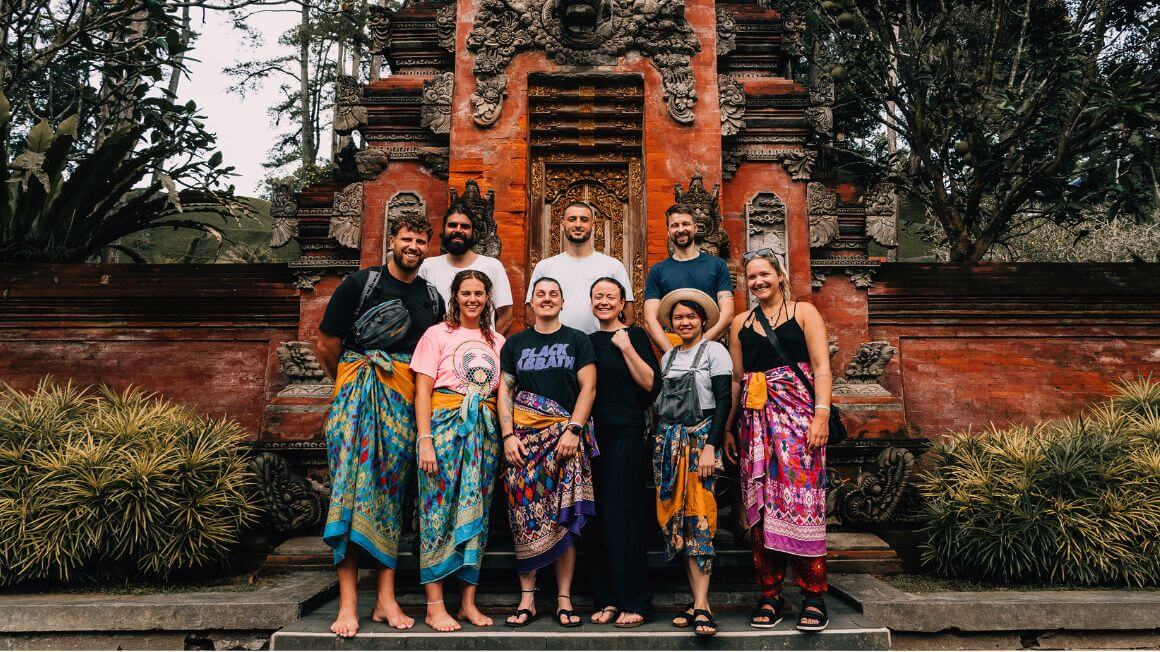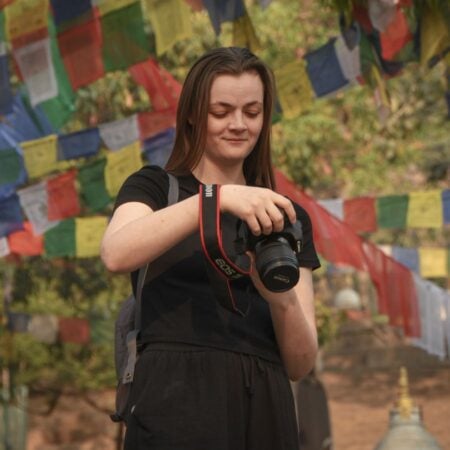The Broke Backpacker is supported by you. Clicking through our links may earn us a small affiliate commission, and that's what allows us to keep producing free content 🙂 Learn more.
Travel is all about adapting, immersing, and connecting, and one of the most authentic ways to do that is trying local cuisine, and getting involved in the culture around meal times, whilst experiencing the rhythm of daily life.
Kyrgyzstan, among the other Central Asian countries, is a culinary delight. With a wide variety of traditional foods and drinks, and an incredible scene of hospitality, some of the best moments of your trip may not come from landscapes or landmarks, but from the food, and the times shared with others.
After all, Kyrgyzstan is the land of the nomads, where hospitality is deeply rooted into their way of life. When it comes to food, the Kyrgz people are not shy, and take the word ‘hospitality’ to a whole new level – Generous portions, never ending bowls of tea, and the determination to fill you to the brim.
Whether you’re sitting cross legged around a table in a yurt, or in a more modern cafe in the city, you’re encouraged to slow down, accept second helpings and engage in meaningful conversation. Dining in Kyrgyzstan is not just a necessity, but a warm invitation to their traditional way of life.

Unlock Our GREATEST Travel Secrets!
Sign up for our newsletter and get the best travel tips delivered right to your inbox.
Kyrgyz Food Culture
While backpacking Kyrgyzstan may not be the biggest country, there is huge diversity within it, and your experience will differ depending on where you are. The most traditional and raw experience you can have by far is staying with a local nomadic family, and it isn’t as hard to do as it sounds. Nomadic culture is still huge to this day, so most places outside of major cities are filled with yurt camps instead of hotels, and are home to local families waiting to welcome you in with open arms and bowls full of tea.
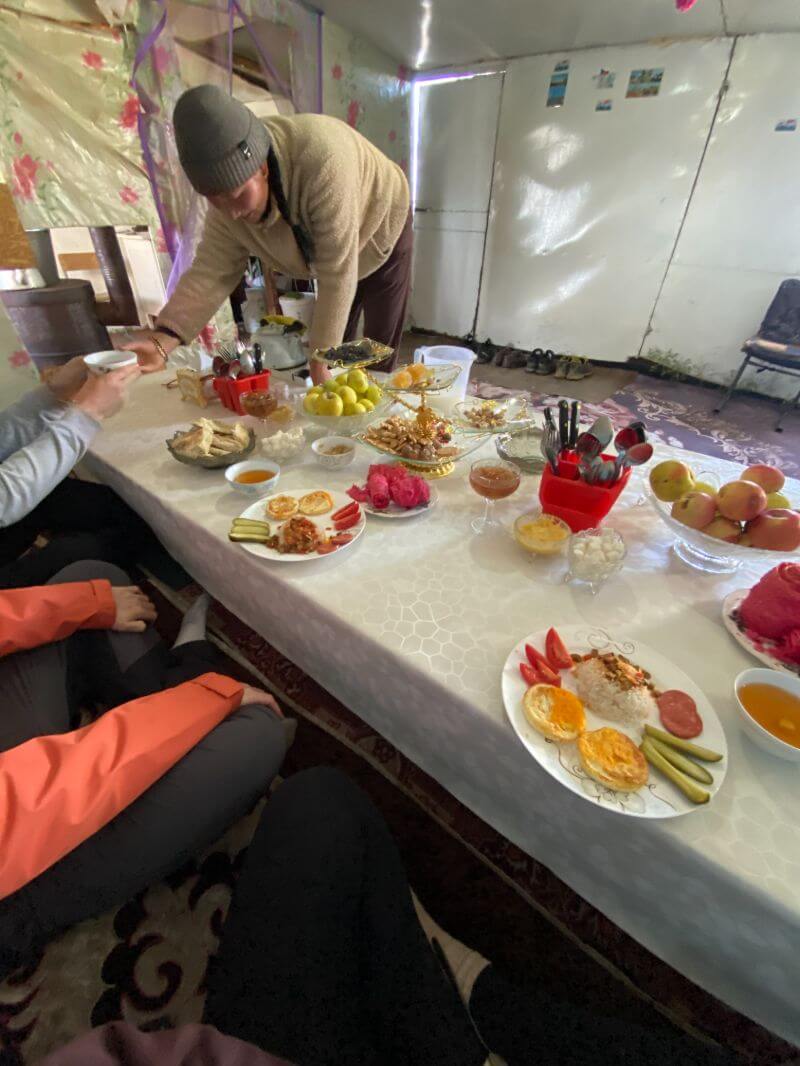
The Broke Backpacker is supported by you. Clicking through our links may earn us a small affiliate commission, and that's what allows us to keep producing free content 🙂 Learn more.
But what makes it so unique?
One of the major differences is that meal time will be a communal and social event. You will gather in a yurt with the family and any other guests, and all will eat together. Most yurts used for meal times have large tables in the centre, with cushioned floors to sit on; this is where you will eat.
As for the meal itself, you will often be served your own plate of the main course, and the table will be filled with items to share, such as bread, tea, and small sweet treats.
You just sipped the last of your tea? No worries, you’re about to get a top-up.
Express how much you enjoyed a particular dish. You’re about to get even more of it.
It’s a food lover’s dream, and a huge part of the experience when travelling the country.
Average Meal Costs in Kyrgyzstan
As with the rest of Central Asia, food in Kyrgyzstan is relatively affordable. Although at a slightly higher price point than South and Southeast Asia, you’re still getting much more for your money than Western prices.
At both hiking and horse trekking yurt camps, breakfast is often included in your stay, and will usually consist of one large meal, multiple smaller courses, or buffet style. You can expect a spread of breads, jams, biscuits, eggs and more.
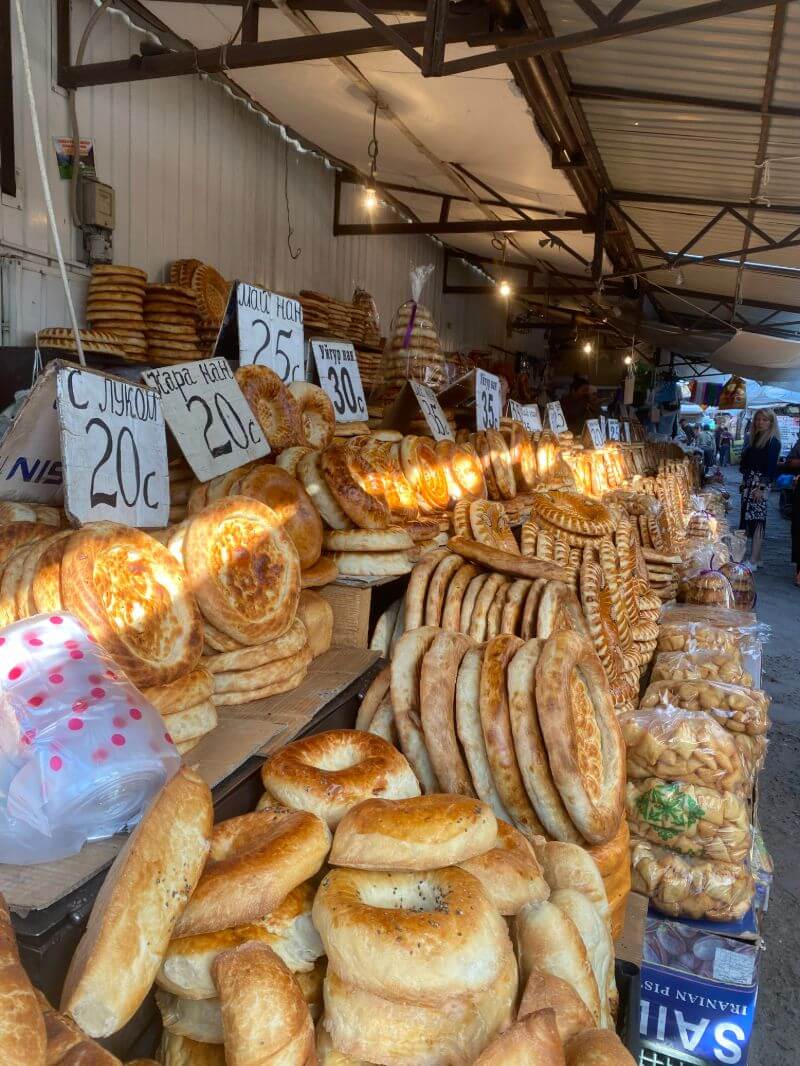
Lunch or dinner at a local cafe or restaurant will set you back between $4 – $8, depending on the meal you choose, and smaller street food items such as samsa, or shashlik, only costing around $.50 – $3, depending on location.
Whether you’re dining in the city or sharing a meal with a local family, you will soon realise Kyrgyz cuisine offers a great blend of value, affordability, and incredible taste.
Is Kyrgyzstan vegetarian-friendly?
Meals in Kyrgyzstan are often centred around meat; however, one thing to know is that even as a vegetarian, you will still be able to enjoy and experience traditional meals.
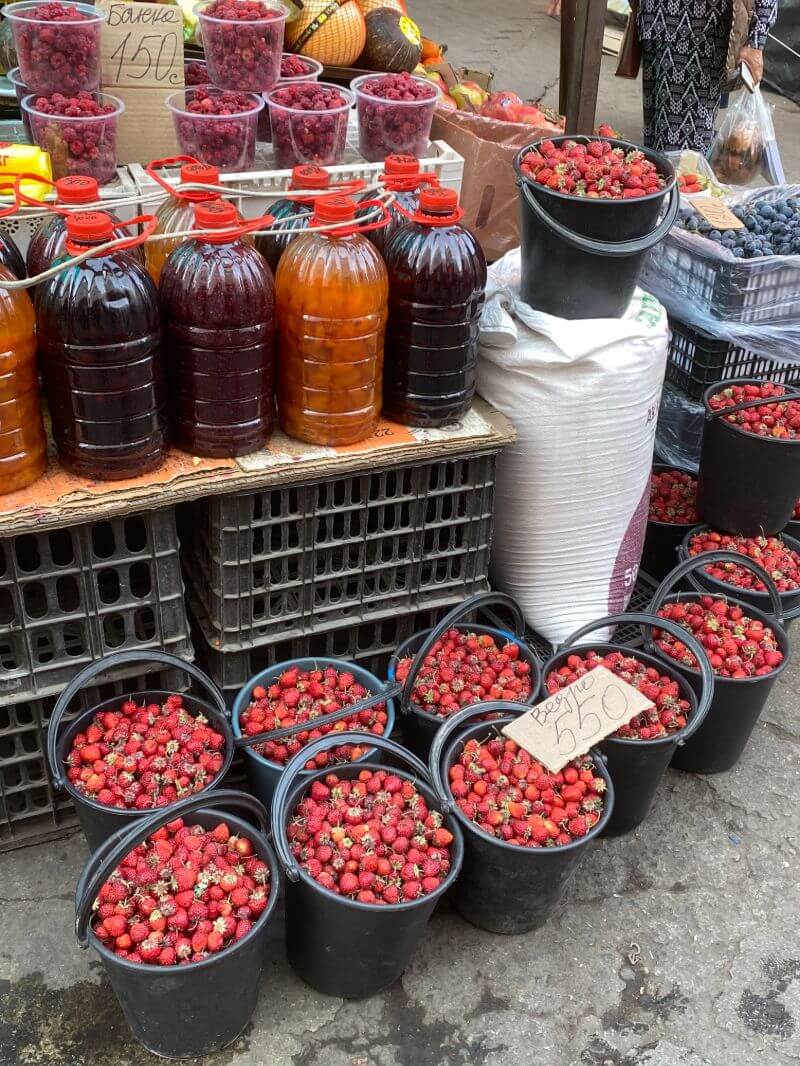
Asking for your meal without meat is an option, as often the meat is added on separately, and you can therefore have the same meal, excluding the meat. Often, food such as manti and samsa has vegetarian versions, tasty even for those who do eat meat!
In recent years, cafes and restaurants in the cities have become increasingly aware of vegetarian preferences; however, in more rural areas of the country, vegetarianism may be less understood, but locals will always try to be accommodating. Many of the staple side dishes you will find are naturally meat-free, such as salads, bread, and variations of cooked potatoes.
Top tip: Learn how to explain that you’re a vegetarian in Kyrgyz.
‘Maine vegetarianminus, maine chachiktarsyz bolsun dessi?’
Above is a simple sentence you could learn, which informs them you want your meal without meat. Not only is this going to help locals understand, ensuring you are served meat-free dishes, but they will also hugely appreciate the gesture of you learning their language.
10 Must-Try Foods in Kyrgyzstan
The very best Kyrgyz food items to check out on your trip!
1. Paloo
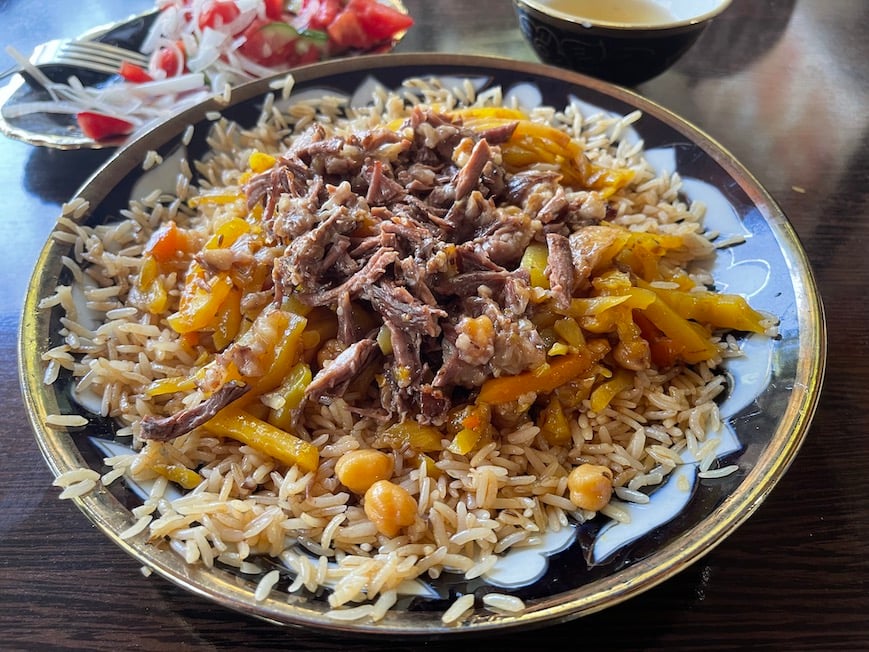
A Central Asian staple, also known as ‘Plov’ amongst other countries, and often known as ‘Pilaf’ to English speakers. Paloo is a rice dish, mixed with grated carrot, onions, and mixed spices, topped with meat, often lamb or beef. You can find this dish all throughout the country, with larger restaurants offering it in the capital of Bishkek, to being served it at a small yurt camp while trekking in the mountains. No trip to Kyrgyzstan is complete without a taste of paloo.
2. Laghman
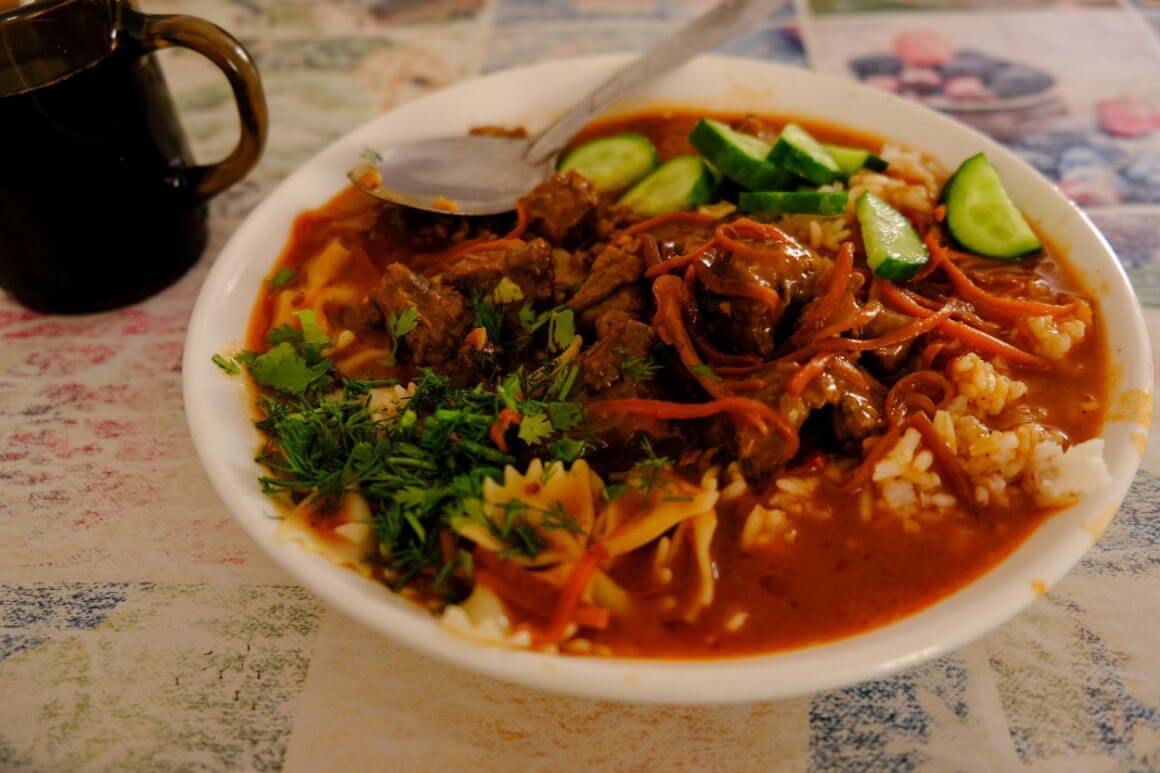
A popular noodle dish, featuring thick noodles, with various roasted vegetables, meat (often beef or lamb) and a vinegar sauce. The noodles are hand-pulled, giving them a uniquely chewy texture. This is a dish you will find in every corner of your stay in the country, always with a slight twist to how it’s being served.
3. Beshbarmak

This simple but tasty meal is a national dish loved amongst the Kyrgyz. Translating to ‘Five Fingers’ in English, a hint at how this meal should be eaten. Consisting of noodles with meat and onions, often served with a broth on the side. This dish is not only satisfying for your appetite, but it is also a symbol of Kyrgyz hospitality.
4. Manti
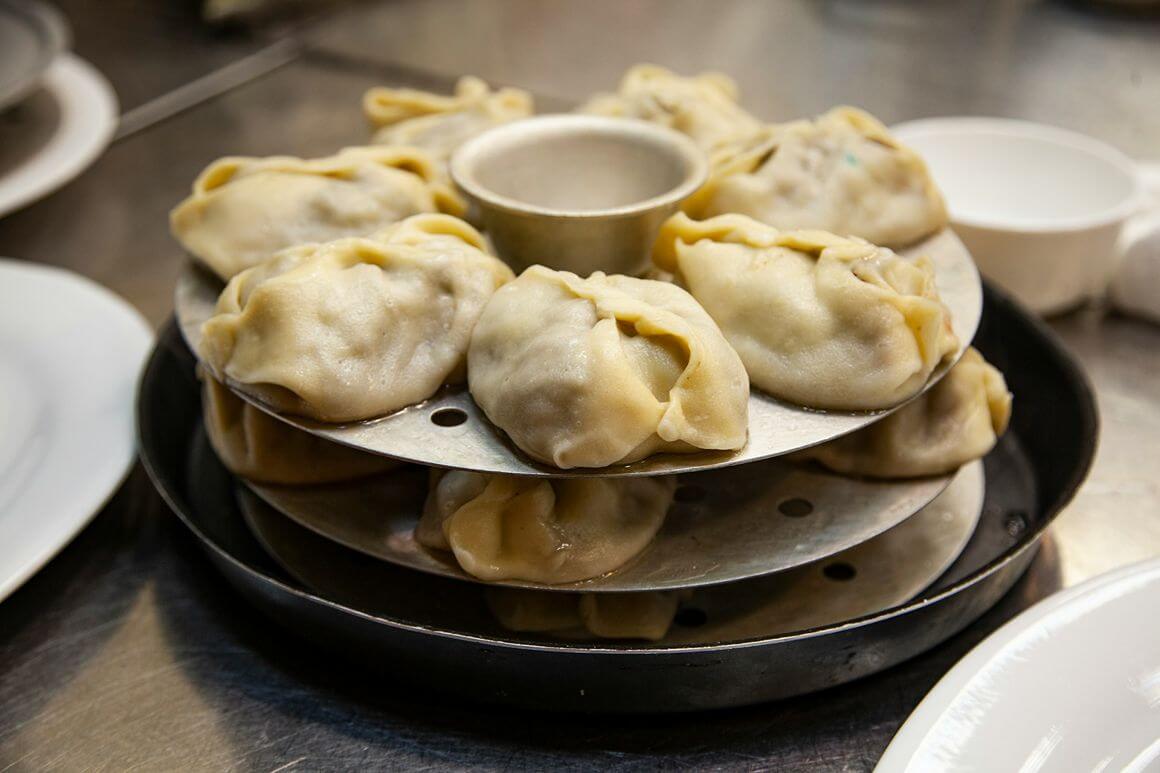
Another popular dish amongst Central Asian countries, you’re bound to be served in Kyrgyzstan. A type of dumpling, often filled with a spiced meat or vegetable mixture, wrapped in a thin sheet of dough, and then either steamed or fried, manti is perfect as a light snack or to share with friends. A personal favourite!
5. Tea
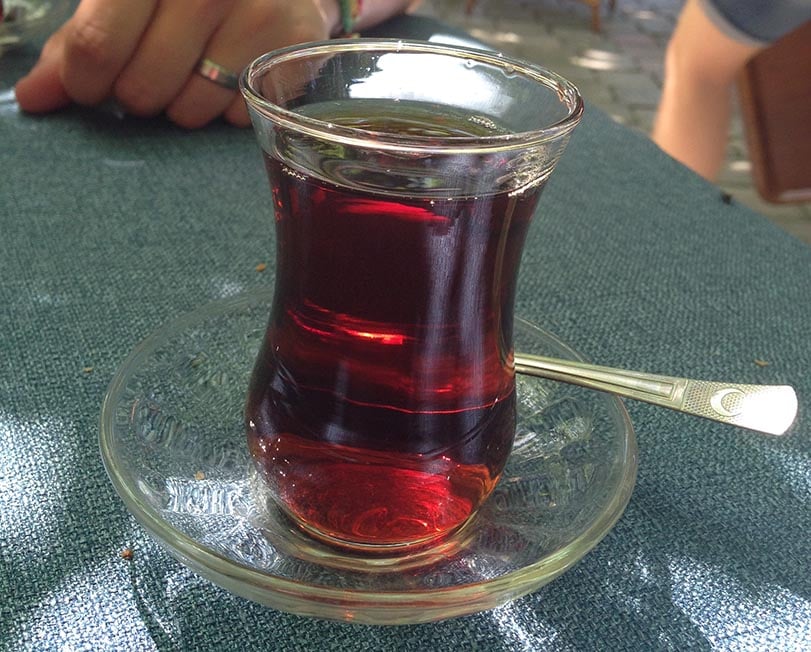
The drink of choice, alongside kumiss, is often tea amongst Kyrgyz people. With different regions specialising and favouring different tea, you’re bound to find yourself sitting around a yurt table sipping on a sweet bowl of tea at some point on your adventure in Kyrgyzstan. Black tea is the most common tea you will be served, with Sea Buckthorn and green tea being common too. Tea is almost always served in small bowls, aimed at helping keep the tea hot.
6. Kemech
More of an addition to a meal, as opposed to a stand-alone item, Kemech is a dairy product made by skimming the cream layer off boiled milk and is served as a spread with bread or crackers, and often added to other meals to add extra richness and creaminess.
7. Shashlik
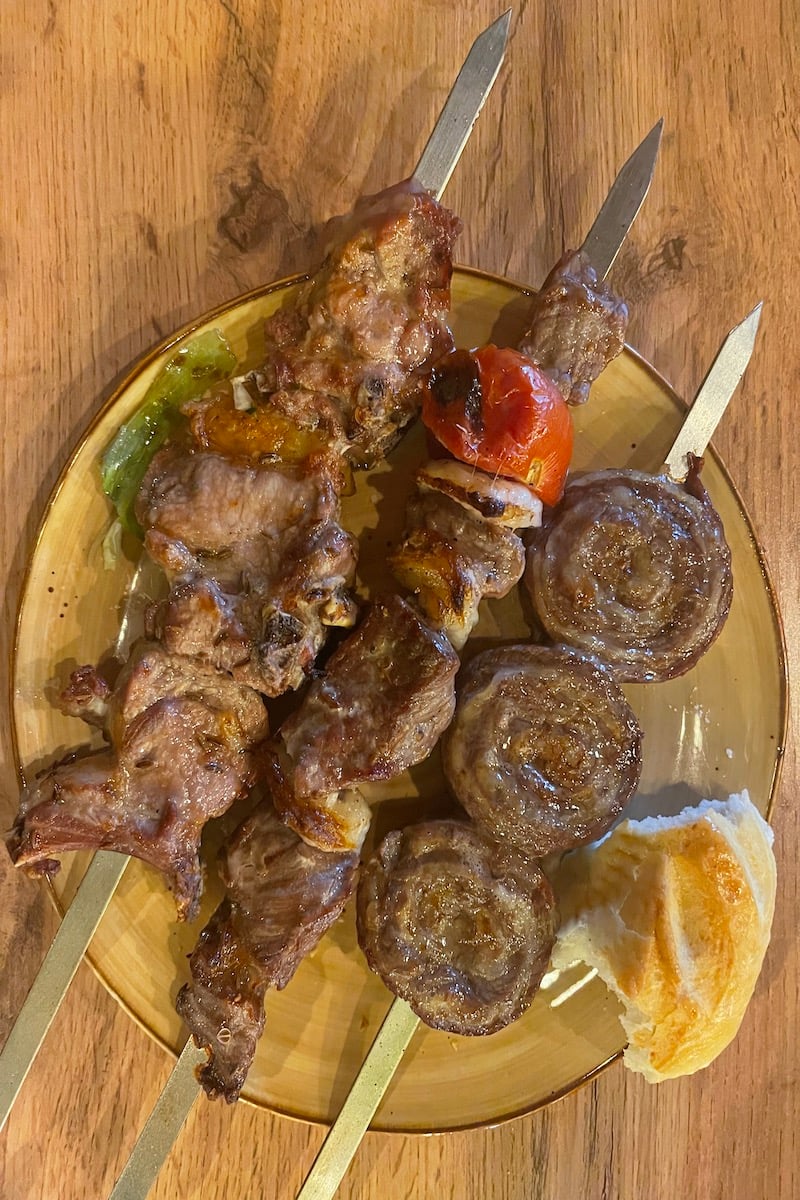
Commonly found in street food stalls and bazaars, shashlik is the Central Asian version of a kebab. You will find many open grills topped with skewers of meat such as lamb, beef or chicken, sometimes with chunks of fat in between layers. You can expect to be served a small side plate of salad or bread when you order one of these.
8. Kumiss
Kumiss (also spelt Kumis or Kymyz) might be the most controversial delicacy in Kyrgyzstan. This fermented horse milk is a drink you’re going to be served with your meal more often than not. Best described as sour or tangy and with a similar situation to Marmite, you will find yourself either bracing for the taste or asking for seconds. Even so, it’s one of those things to do in Kyrgyzstan you can’t miss!
9. Samsa
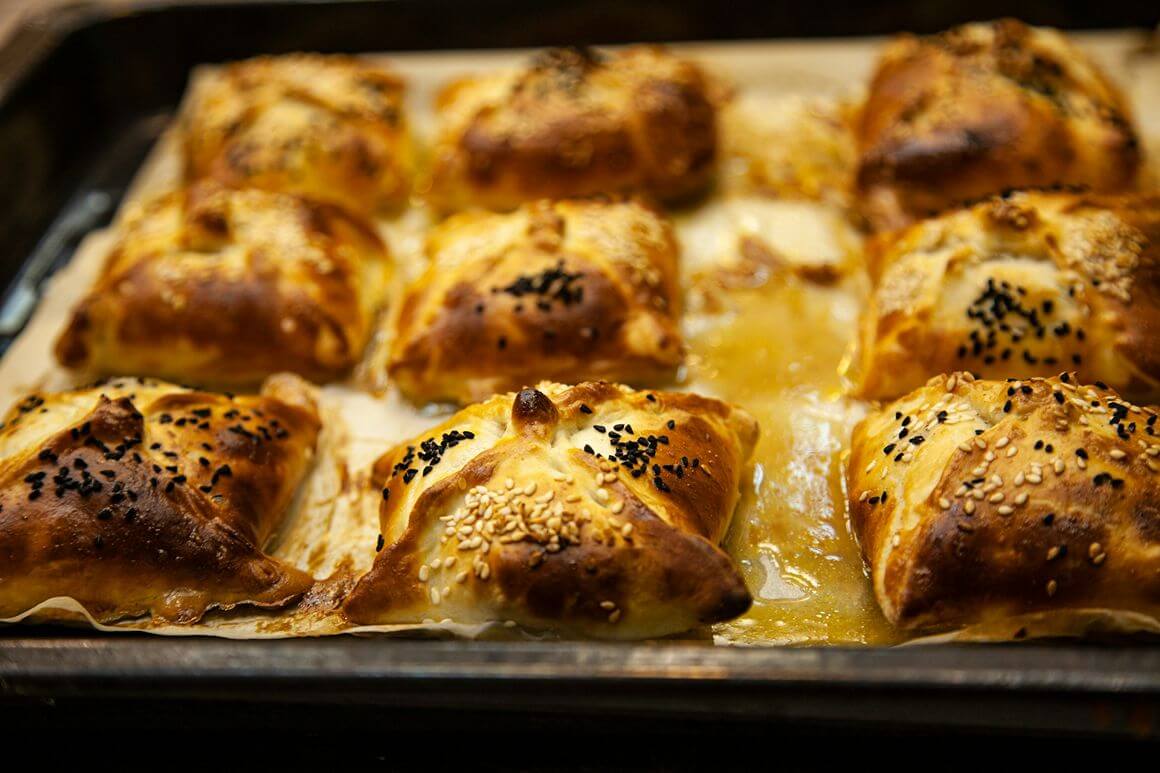
The Central Asian version of a pasty or empanada, samsa is a flaky pastry filled with meat (usually beef or chicken), veg, or potato. You will find these on most menus across the country, as well as being served at bazaars, and being homemade in more rural areas.
10. Borsok
One of the simpler, yet incredibly tasty delicacies of Kyrgyzstan, borsok is a deep-fried dough ball, similar to a western doughnut, however savoury. Typically served as a small snack and a sign of hospitality, you may find yourself with a few on the side of a cup of tea or as a communal plate for everyone. It also has ties to a particularly unique local tradition.
Final Thoughts on Kyrgyzstan Food
Exploring Kyrgyzstan through its food is one of the best ways to connect with the culture of this incredible country. From the first bowl of tea you are handed in a mountain yurt, to the tastiest beshbarmak, or plate of paloo, you are served, every meal holds a story of hospitality and history.
Kyrgyz cuisine has been shaped by many generations, and is a way of life. So come with an open mind, a big appetite and the willingness to sit down on the floor with strangers, who will share their story with you.
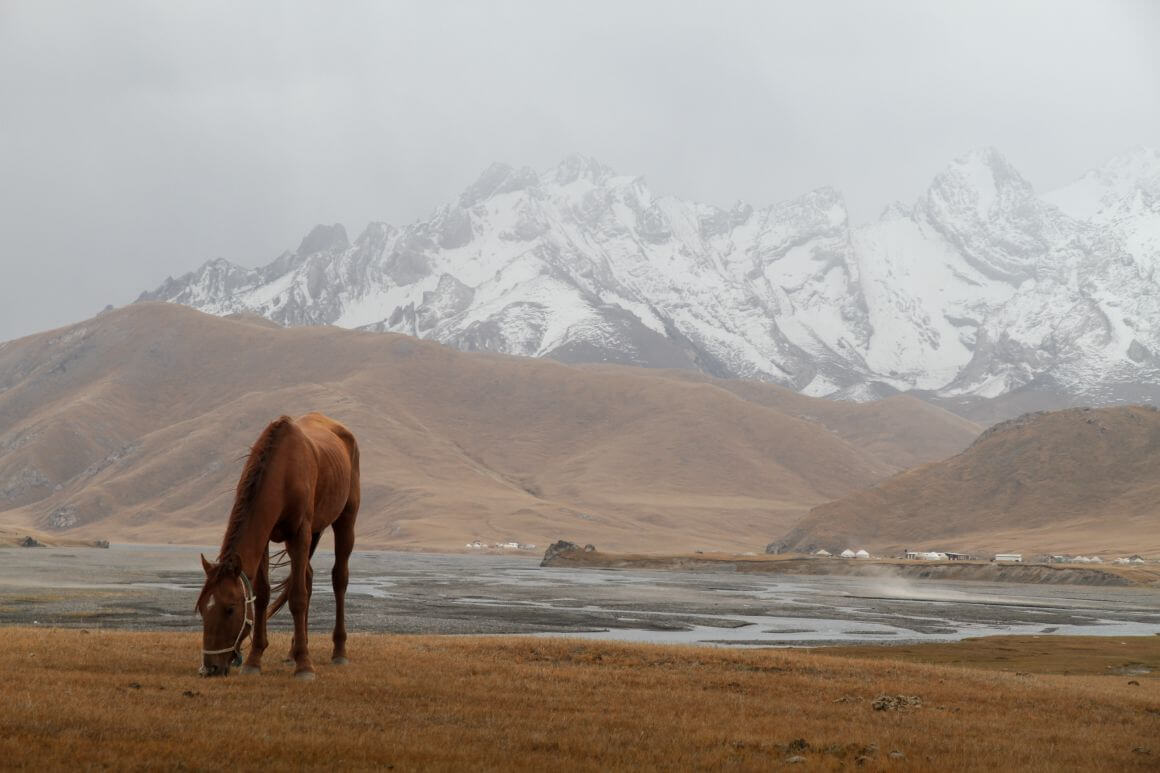
Photo: Solo With El
Buy Us a Coffee!
A couple of you lovely readers suggested we set up a tip jar for direct support as an alternative to booking through our links, since we’ve decided to keep the site ad-free. So here it is!
You can now buy The Broke Backpacker a coffee. If you like and use our content to plan your trips, it’s a much appreciated way to show appreciation 🙂


